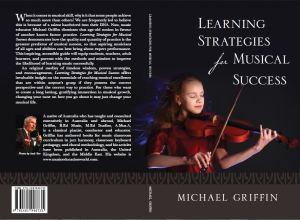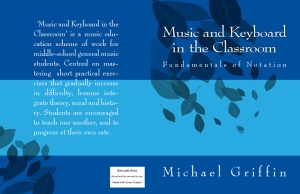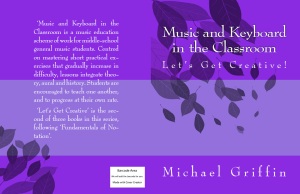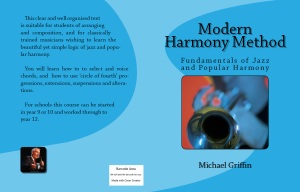The inflexible and automatic knowledge gained through repetition is the foundation of expert performance, but be warned—repeat carefully! The learning brain does not distinguish between good and poor habits but learns whatever we repeat. Repetition creates permanence, and habits are difficult to correct. In particular pay attention to rhythmic accuracy. Rhythmic patterns are robustly set in the memory and difficult to alter once in place.
Inexperienced learners struggle with the discipline required for repetition and get lulled into a false sense of mastery when they judge themselves as having played a passage reasonably well. Without sufficient repetition, however, the learning soon will unravel. Teachers should practise in front of students, modelling the ‘how’ of repetition. It is advisable to give young musicians who have not yet reached the metacognitive stage a quantifiable number of repetitions to aim for in their practice, perhaps a number not less than six. As students become more mature learners they regulate repetition, depending on the complexity of the passage. Experts repeat short passages of music again and again.
Most musicians stop repeating when they play a passage correctly, but it is crucial that they keep repeating after this point. Brain connections strengthen and consolidate with myelin, a substance that insulates the axon of a neuron; it is known as the white matter of the brain. Myelin development seems to be a key for learning and maintaining skills because it increases the speed and accuracy of data transmission. Myelin formation is more important than the number of neurons in the brain. Albert Einstein’s brain, for example, had no more neurons than the average brain, but it had twice as much myelin. Experts have more myelin build-up on the neural circuits pertinent to their domain than do non-experts. In 2005 a Swedish professor found a positive correlation between myelin development and the number of hours professional pianists practised. Myelin is a product of activity and is one aspect of brain plasticity, a term that refers to physical changes in the brain. Brain plasticity includes an increase in myelination and an increase in the number of connections between neurons. In musical learning, increasing repetition of a phrase after one plays it correctly builds myelin, which supports consistent and accurate performance.
The amateur practises until he gets it right. The professional practises until he cannot get it wrong. – Stephen Hillier
The amateur stops repeating when he gets it right. The professional repeats well after to consolidate the myelin coating of the axon sheath. – Michael Griffin
It is common to confuse temporary performance effects with long-term learning. The teacher or parent may mistake the phrase “But I played it better yesterday” as a white lie, and the student might be disillusioned because he or she thinks the blocks of repetition should have been sufficient for more permanent learning. There are two issues here. First, even with spaced repetition the consolidation process takes as long as it takes, and then some more for good measure. We cannot predict how much repetition it will take to master a skill but human nature almost always underestimates this. If a passage a student thought he or she learned yesterday is a muddle today the student must repeat the repetition process. Try not to be despondent. This is a natural part of acquiring skill. Memories do not just form at the point of learning so it may take several sittings for neural connections to become strong. Some people seem to learn more quickly than others, but learning is not a race, and we are all capable of complex skill development through repetition. It may take one person six hundred repetitions over two weeks to consolidate a phrase, while it may take someone else only three hundred repetitions in one week. Students must learn to be patient and trust in the power of repetition.
Repetitio est mater studiorum!
From Learning Strategies for Musical Success
The Music Trust (review) VMTA (review)
“A must read for all music educators” – Robert Adams, New Haven, USA.
“Super book. I am so impressed!” – Donna Michaels, USA
“Fantastic book, simply brilliant! – Ian Cooper, Norfolk, UK
“Don’t miss this opportunity!” – Mary George, USA
“Rarely do I come away feeling so inspired. Incredibly beneficial.” – Music Matters Blog
“Deeply impressive, the breadth of research is fascinating!” – Robert Chamberlain, Team of Pianists and Monash University Piano Staff, Victoria Australia.
“I have read your book and it has made an amazing difference in my teaching and in my studio.” Beth Cruickshank, Past President – Ontario Registered Music Teachers Association.
Amazon
Amazon UK
Kindle US
Kindle UK
Australia: Contact mdgriffin63@gmail.com for direct mail.
Also by Michael Griffin
Music and Keyboard in the Classroom: Fundamentals of Notation is a unit of work for general music middle school classes. Designed around the mastering of practical skills, it integrates theory, aural and history, and allows students to progress at their own rate. View Table of Contents. “This has been a great buy; the books are just superb! Interesting topics with a wide range of pieces. Great content with clear progression of learning. Fascinating teaching philosophy! BRAVO!” -The Grieg Academy, London. Available at Amazon.com
Music and Keyboard in the Classroom: Let’s Get Creative! is the fun and creative extension to ‘Fundamentals of Notation’.
View Table of Contents. “We have been using your keyboard course and the results have been amazing!” – St George College, Australia
Available at Amazon.com
‘Bumblebee: Rounds & Warm-ups for Choirs’
Second edition. Bumblebee! is more than just a wonderful collection of 130 choir exercises and rounds. The author shares timeless wisdom to help you get your choir – primary or secondary – into shape.
View Table of Contents.
“This is really good for all kinds of vocal groups, choirs, conductors. Bravo!!”
“The thinking person’s guide to training a choir. Love it!”
“It’s great to have some fresh warm-ups to add to the repertory. The tips for actions and techniques are really useful, and the advice at the back of the book has made me review some of my strategies.”
Modern Harmony Method: Fundamentals of Jazz and Popular Harmony (Third Edition, 2013) is a clear and well organised text suitable for students of arranging and composition, and for classically trained musicians wishing to grasp the beautiful logic of jazz harmony. Essential understandings include chord selection, voicing, symbols, circle of 4th progressions, extensions, suspensions and alterations. Included in the 107 pages are explanations, examples, exercises and solutions. The course can be started with students in year 9 and worked through to year 12 musicianship, composing and arranging. Available at Amazon.com






Reblogged this on Simon Smith and commented:
Michael Griffin’s blog has some very interesting thoughts on the mental aspects of becoming a musician. Well worth exploring!
Thank you, Michael – most helpful for me and my students!